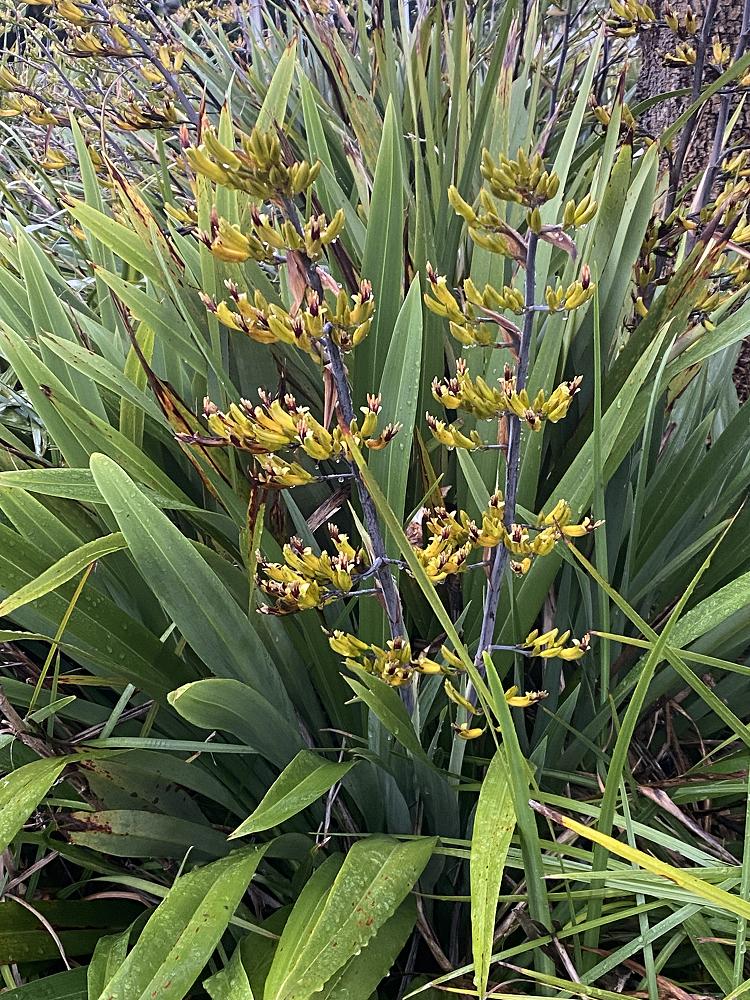
He Whakaaroaro; Pā harakeke
The poem Muka written by Trixie Te Arama Menzies personifies elements of the natural environment, the Pā harakeke (flax plant whānau) common in all parts of Aotearoa.
This poem speaks about how the muka (fibre) of harakeke (flax) is woven by the Master weaver and fashioned to reveal its beauty. The poem draws us closer to the taiao (environment) and how important it is that we ensure its sustainability. Menzie's poem dedicated to the weavers of Waiata Koa inspired this Te Reo Māori interpretation
So may I be as the muka –
My flax has been patu’d by stone pounders
I am dyed in the colours of my passions
But then taken and shaped by deft loving fingers
of the master craftswomen,
Disciplined into design
At the last, may I shine lustrous with inner fires
Which were fed thrpugh green blades
from the body of Papatuanuku
Alight with radiance of Te Ra,
Fitted to serve
Kia rite ahau ki te muka –
Kua tukia e te patu kōhatu
Ka kōpirongia e ngā wai o te ngākau
I hangaia e ngā ringa atawhai o te Mareikura
Mā te ringa rehe ka puta atu tōna ataahua
Ko te hā o te Ora
I ahu mai i a Papatūānuku
Me te muramura o Te Rā
Hei koha mō te iwi
Reflection Pā harakeke
Living in the Taranaki province we are surrounded by an abundant supply of water and harakeke is easily accessible from where I live. A nearby nursery of harakeke varieties, a Pā harakeke, was established many years ago by local weavers who wanted to ensure the continued protection and sustainability of harakeke in this region. People interested in helping to conserve this Pā harakeke voluntarily offer their time and expertise by helping to cultivate and regenerate these native plant varieties.
I was first introduced to this place on a Te Wānanga o Aotearoa course into Rongoā Māori. We learned about the different varieties, their various uses and how to harvest and conserve the Pā harakeke. We were part of a community of learners, kaitiaki (stewards) of a natural resource and were encouraged by our tutor to share our knowledge and skills with others.
Pā harakeke need tender care and nurturing to maintain optimum health. Otherwise, the Pā harakeke becomes overgrown and with limited space or sunlight to grow the harakeke is more susceptible to disease. In tending a Pā harakeke the principles of manaakitanga (care and protection) and practice of kaitiakitanga (stewardship) ensures sustainability of this resource for the future. Kaitiaki observe tikanga (practices), karakia (incantations) to protect the kaitiaki and mauri (life principle and vibrancy) of the Pā harakeke.
Building community is a challenge at any time. We acknowledge the many kaitiaki in our church who give generously of their time and energies in the upholding of our faith communities. Kaitiaki embrace and apply these same principles of manaakitanga and kaitiakitanga in their daily living. Embedded at the core of their being, kaitiaki nurture and empower others to enable our communities to shine.
